Find the best tutors and institutes for Class 11 Tuition
Search in
Although the Physics CBSE class 11 syllabus is prepared in a learner-centred manner, it often turns out to be nerve-racking for many CBSE schools students. It is presumably a direct result of the enormous number of core concepts studied. Laws of Motion, Gravitation, Thermodynamics, Mechanical Properties of Solids, System of Particles & Rotational Motion, Units and Measurements and Kinetic Theory are amongst the core concepts which are considered in Class 11 Physics textbook.
To help you learn each concept thoroughly, we have come up with an accurate and detailed Class 11 Physics NCERT Solutions to help achieve your desired score. We also provide NCERT Solutions for Class 11 Physics PDF format for you to download and practice in an organised manner. To score high marks in the exam can also refer to NCERT study materials like sample papers, question papers,
Physics is an important discipline studied at the higher secondary stage, where several sufficient conceptual backgrounds of Physics are provided at this stage. The Physics syllabus for Class 11 is drafted by the National Council of Educational Research and Training (NCERT). NCERT Physics Book of Class 11 is constructed with rigour to meet students needs and has also been taken that it is comparable to the international standards. Moreover, NCERT, as a research organisation comprehends that the higher secondary stage is crucial as a transition from general science to the discipline-based curriculum takes place.
The overall syllabus for class 11 attempted to provide groundwork and foundation to students for further learning Physics at the tertiary level. It promotes problem-solving abilities, creative thinking etc. to develop an interest in students to study Physics as a discipline. It likewise aims to develop conceptual competence and expose students to different processes used in Physics-related industrial and technological applications and more.
NCERT proposed syllabus for Class 11 Physics consists of 10 units and 15 chapters. Below is the complete list of the chapters of NCERT Class 11 Physics Textbook to know in detail.
Chapter 1 – Physical World
NCERT Physics Chapter 1 is about the Physical world that is surrounding us. In this, you’ll learn about the study of matter and how it behaves under different conditions, scope and excitement of physics, physics, technology and society, fundamental forces in nature and nature of physical laws.
Chapter 2 – Units and Measurements
In this chapter, you’ll learn about the international system of units, how to measure length, mass and time, Accuracy, the precision of instruments and errors in measurement, Dimensions of physical quantities etc., and many other related sub-topics.
Chapter 3 – Motion in a Straight Line
Chapter 3 Motion in a Straight Line is about various aspects of an object in motion. You’ll learn detail about the position, path length and displacement of motion, average velocity and average speed, instantaneous velocity and speed, acceleration and relative velocity in detail.
Chapter 4 – Motion in a Plane
This chapter is about Motion in a Plane. Here, students will get detailed knowledge about the concept and its aspects like Motion in a plane with constant acceleration, relative velocity in two dimensions, projectile motion, uniform circular motion. You’ll also learn Scalars and vectors, Multiplication of vectors by real numbers, Addition and subtraction of vectors – graphical method etc.
Chapter 5 – Laws of Motion
This chapter will take you through the laws of motion. Here you’ll learn about Aristotle’s fallacy, The law of inertia, Newton’s first law of motion, Newton’s second law of motion, Newton’s third law of motion, Conservation of momentum, Equilibrium of a particle etc.
Chapter 6 – Work, Energy and Power
In this chapter, students will get detailed knowledge about Work, Energy and Power. Topics like The Scalar Product, Notions Of Work And Kinetic Energy: The Work-energy Theorem, Work, Kinetic Energy, Work Done By A Variable Force, The Work-energy Theorem For A Variable Force, The Concept Of Potential Energy etc., will help in getting a clear concept.
Chapter 7 – System of Particles and Rotational Motion
This chapter will take you through the motion of a rigid body, both translational and rotational. Here you’ll learn about Centre Of Mass, Motion Of Centre Of Mass, Linear Momentum Of A System Of Particles, Vector Product Of Two Vectors, Angular Velocity And Its Relation With Linear Velocity etc.
Chapter 8 – Gravitation
Chapter 8 is about Gravitation, discovered by Sir Issac Newton. You’ll learn about Kepler’s Laws, Universal Law Of Gravitation, The Gravitational Constant, Acceleration Due To The Gravity Of The Earth, Gravitational Potential Energy, Escape Speed, Earth Satellites etc.
Chapter 9 – Mechanical Properties of Solids
This chapter will give detail about the physical and mechanical properties of a solid substance. Going further you’ll study about Elastic Behavior of Solids, Stress and Strain, Hooke’s Law, Stress-Strain Curve, Elastic Moduli etc., and much more.
Chapter 10 – Mechanical Properties of Fluids
Fluids are those substances that have no definite fixed shape or size. In this chapter, you’ll study Mechanical Properties of Fluids. You’ll also learn about Pressure, Pascal’s Law, Variation of Pressure with Depth, Atmospheric Pressure and Gauge Pressure, Hydraulic Machines, Streamline flow etc.
Chapter 11 – Thermal Properties of Matter
Chapter 11 is about Thermal properties of different objects. Going further you’ll get to study about Temperature and Heat, Measurement of Temperature, Ideal Gas Equation and Absolute Temperature, Thermal Expansion, Specific Heat Capacity, Calorimetry, Change of State etc.
Chapter 12 – Thermodynamic
In this chapter, students will learn about Thermal Equilibrium, Zeroeth Law of Thermodynamics, Heat, internal energy, and work, First Law of Thermodynamics, Specific Heat capacity, Specific Heat Capacity of Water, Thermodynamic processes etc.
Chapter 13 – Kinetic Theory
Kinetic Theory is associated with the movement of particles of gases. In this chapter, you’ll learn about the relationship between Pressure, Volume, Temperature and other macroscopic properties of gases, Law of Equipartition of Energy, Specific Heat Capacity etc.
Chapter 14 – Oscillations
This chapter will give detail about Periodic and Oscillatory Motion, Period and Frequency, Displacement, Simple Harmonic Motion, Simple Harmonic Motion and Uniform Circular Motion, Periodic and Oscillatory Motion etc.
Chapter 15 – Waves
This chapter will take you through the concept of Waves and its sub-topics like Transverse And Longitudinal Waves, Displacement Relation In A Progressive Wave, Amplitude And Phase, Wavelength And Angular Wave Number, Period, Angular Frequency And Frequency etc.
UrbanPro is India’s largest and most trusted learning network to find verified Tutors, Trainers and Institutes across multiple categories. We at UrbanPro, believe in delivering quality education to students in order to make learning better for the upcoming generation. As an educational platform, we have come up with the NCERT Physics Class 11 Solutions PDF chapter-wise that covers answers to all the questions in the Class 11 Physics textbook. Answers provided below are solved by highly skilled trainers with decades of experience in the field. Thus, we strongly recommend you to adopt our NCERT Physics solutions to understand each chapter in a thorough manner.
You need to rely on NCERT textbooks as the questions are framed from them. For additional guidance and revision, the book – Concepts of Physics by H.C Verma can be used.
As observed in the previous few years question papers, NCERT textbooks are sufficient to score well in the final examination. For additional guidance and information, you can use other reference books which are available in the market.
Last-minute preparations are not advisable as it can obstruct your brain from remembering what you have studied. Instead, memorise the concepts and terms that you have already studied. You can also keep all the diagrams and formulae handy to revise at the end.
There are a total of 15 chapters in NCERT Class 11 Physics. The syllabus comprises two parts – Part I consists of 8 chapters and Part II consists of 7 chapters. To know more, click here.
You can find downloadable NCERT Class 11 Physics Solutions PDF on UrbanPro. Physics experts meticulously draft the solved exercises in the PDF for a better understanding and to help you study with ease.
Published on 2020-02-10 09:35:48 by arunima. Last Modified on 2020-02-10 09:35:48
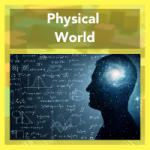
Chapter 1 Physical World
Physics is an integral part of science. It is the study of matter and how it behaves under different conditions. In order to continue with science in class 12, or even take up engineering or any other science-related degree for graduation, this chapter...
Read More >
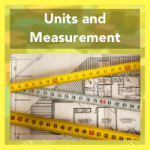
Chapter 2 Units and Measurement
In this chapter, you will learn about units and base units as well as how to make measurements. Every physical body that is measured is based upon a number to finalise its quantity. Chapter 2 of the book, Physics Part-I, has 10 sub-sections with each...
Read More >

Chapter 3 Motion in a Straight Line
This chapter teaches you the various aspects of an object in motion. It also explains the relevance, need and importance of speed, distance, etc. At UrbanPro, you will be provided with Motion in a Straight Line Class 11 NCERT Solutions that will help...
Read More >

Chapter 4 Motion in a Plane
In this chapter, we are going to learn about the motion in a plane. It is also known as motion in two dimensions. To analyse this type of motion we will take a reference of an origin and two coordinates. Chapter 4 of the book, Physics Part-I, consists...
Read More >
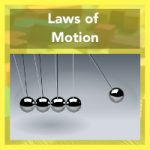
Chapter 5 Laws of Motion
In this chapter, you will learn about the laws of motion. This is one of the most important topics as these laws are used repeatedly in other topics as well. You will study the motion of a body taking into consideration the main cause behind the motion...
Read More >

Chapter 6 Work Energy and Power
In the language of science, work done can be defined as the product of force and displacement. It is fundamentally one of the most basic laws of Physics. The output of any tool or machinery is calculated by using this essential formula or some derivative...
Read More >
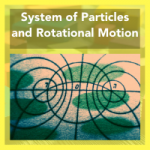
Chapter 7 System of Particles and Rotational Motion
In this chapter, you will learn about the motion of a rigid body, both translational and rotational. In rotational motion, the movement is defined by the maximum farthest point from the centre. Chapter 7 of the book, Physics Part-I, consists of the 14...
Read More >
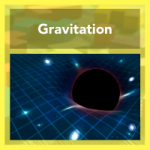
Chapter 8 Gravitation
Gravitation is one of the most fascinating phenomena in the world of Physics. Initially discovered by the great scientist Sir Issac Newton, it is the reason that causes the earth and other planets to revolve around the sun, and is also what causes the...
Read More >

Chapter 9 Mechanical Properties of Solids
Stressing upon the importance of physical and mechanical properties of a solid substance will be simply an understatement. The very roots of mechanical and civil engineering are the two foundational engineering subjects that are required for understanding...
Read More >

Chapter 10 Mechanical Properties of Fluids
In this chapter, we will learn that, Scientifically, fluids are defined as substances with no definite fixed shape or size. Their characteristics change easily when subjected to external pressure. It is imperative to have a clear understanding of fluid...
Read More >

Chapter 11 Thermal Properties of Matter
In this chapter, we will learn about the thermal properties of different objects. As we know, the term ‘thermos’ is associated with heat. Heat is a form of energy which is dissipated from one body to another by virtue of the temperature difference. This...
Read More >

Chapter 12 Thermodynamics
In this chapter, we will learn about thermodynamics and its different processes. Thermodynamics can be described as the transformation of heat into other forms of energy and Vice-Versa. Thermodynamics is a macroscopic science and it does not deal with...
Read More >
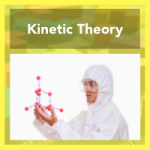
Chapter 13 Kinetic Theory
The chapter Kinetic Theory is mainly associated with the movement of particles of gases. Gas doesn't have a fixed shape or volume and fills up the entire space of the container they are kept in. At a microscopic level, the molecular particles have a high...
Read More >
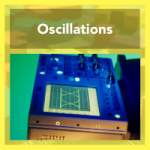
Chapter 14 Oscillations
Oscillation refers to the repetitive to and fro motion of an object along a fixed axis at a regular interval of time. The chapter has its usages in all spheres of life. The entire music world is based on the phenomenon of Oscillation- including the musical...
Read More >

Chapter 15 Waves
Waves have been considered to be fascinating to humans since times immemorial. They are known as a disturbance which travels through a material medium because of a repeated periodic motion of the particles without any physical transportation of the matter....
Read More >
How helpful was it?
How can we Improve it?
Please tell us how it changed your life *
Please enter your feedback
Recommended Articles
5 Engaging Activities For Children To Get...
Learning for every child starts from a very young age. While the formal methods include school curriculums and private lessons, the informal methods include dancing, music, drawing, and various fun-filling activities. Playing games and practising these types of activities helps the children get out of boredom and...
Read full article >
The Rising Problems in Indian Government School
With the mushrooming of international and private schools, it may seem that the education system of India is healthy. In reality, only 29% of children are sent to the private schools, while the remaining head for government or state funded education. So, to check the reality of Indian education system it is better to look...
Read full article >
6 Healthy Habits of School Children
While schools provide formal education to the children, the home is where they start learning about things informally. Parents think that schools will take the initiative to educate their children. Well, this is partially true, as parents also play an essential role in bringing up their child. For the development of particular...
Read full article >
Find best tutors for Class 11 Tuition Classes by posting a requirement.

Get started now, by booking a Free Demo Class